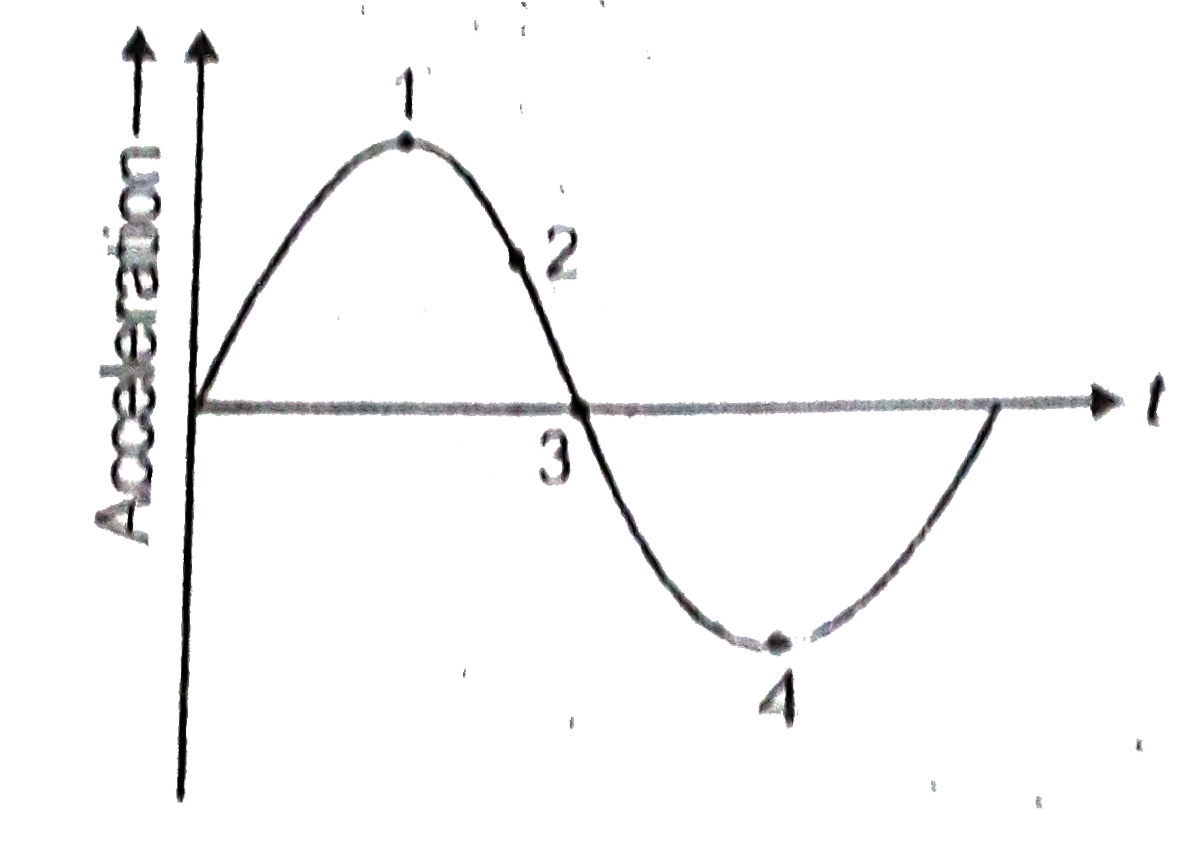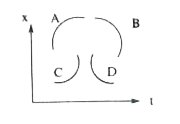Match Column-I with Column-II :
Column-IColumn-II(1) Positive acceleration(a) Speed of particle decreases(2) Negative acceleration(b) Speed of particle increases(c) Speed of particle keep on changingSolution in Gujrati
The correct Answer is:(1-b), (2-a)
Step by step video, text & image solution for Match Column-I with Column-II : {:("Column-I","Column-II"),("(1) Positive acceleration","(a) Speed of particle decreases"),("(2) Negative acceleration","(b) Speed of particle increases"),(,"(c) Speed of particle keep on changing"):} by Physics experts to help you in doubts & scoring excellent marks in Class 11 exams.
Updated on:21/07/2023Topper's Solved these Questions
- OBJECTIVE QUESTIONS AS PER NEW PAPER STYLE BOOK - KUMAR PRAKASHANCHAPTER - OBJECTIVE QUESTIONS AS PER NEW PAPER STYLE EXERCISE - CHAPTER - 4 (Fill in the Blanks)
10 Videos
- OBJECTIVE QUESTIONS AS PER NEW PAPER STYLE BOOK - KUMAR PRAKASHANCHAPTER - OBJECTIVE QUESTIONS AS PER NEW PAPER STYLE EXERCISE - CHAPTER - 4 (Are the following statements True or False ? )
10 Videos
- OBJECTIVE QUESTIONS AS PER NEW PAPER STYLE BOOK - KUMAR PRAKASHANCHAPTER - OBJECTIVE QUESTIONS AS PER NEW PAPER STYLE EXERCISE - CHAPTER - 3 (Are the following statements True or False ? )
10 Videos
- MOTION IN A STRAIGHT LINE BOOK - KUMAR PRAKASHANCHAPTER - MOTION IN A STRAIGHT LINE EXERCISE - QUESTION PAPER
11 Videos
- OSCILLATIONSBOOK - KUMAR PRAKASHANCHAPTER - OSCILLATIONSEXERCISE - QUESTION PAPER (SECTION - D)
1 Videos
Similar Questions
If →A⋅→B=AB, then angle between →Aand→B will be …... .
View Solutionˆiandˆj are unit vector along x-axis and y-axis respectively.Find the resultant vector.
View SolutionAn object have zero velocity even then it has acceleration.
View SolutionDefine frame of reference and give its types.
View SolutionA cylindrical piece of cork of density of base area A and height h floats in a liquid of density pl. The cork is depressed slightly and then released. Show that the cork oscillates up and down simple harmonically with a period
T=2π√hpp1g
where p is the density of cork. (Ignore damping due to viscosity of the liquid).
View SolutionThe acceleration- time graph of a particle executing SHM along x-axis is shown in figure. Match Column-I with column-II

Column-IColumn-IIPosition of particlePhysical,quantites related with particle's motion(A)At position 1 (p)Kinetic energy is maximum(B)At position 2 qPotential energy is maximum(C)At position 3(r)Displacement of particle is negative(D)At position 4(s)Velocity is maximum
View SolutionColumn I represent the size of the soil particles and Column II represents type of soil components. Which of the following is correct match for the Column I and Column II.
View SolutionMatch Column-I with Column-II : {:("Column-I","Column-II"),("(1) Change in momentum","(a) Force"),("(2) Rate of change of momentum","(b) Impulse of force"),(,"(c) Momentum"):}
View SolutionMatch Column-I with Column-II :
Column-IColumn-II(1)m1m2m1+m2Reduced mass of a system of two particles(2)r1+r22(b) position vector of centre of mass of a system of two particles of same mass
View SolutionMatch Column-I with Column-II :
Column-IColumn-II(1) The magnitude of escape speed of surface of Earth(a)2.38kms−1(2) The magnitude of escape speed on surface of Moon(b)7.92kms−1(c)11.2kms−1
View SolutionMatch Column-I with Column-II : {:("Column-I","Column-II"),("(1) It has never a positive value","(a) Escape speed"),("(2) The reason of negative potential energy of galaxy is","(b) Gravitational potential energy"),(,"(c) The type of force acting between different galaxies is attarctive"):}
View SolutionA particle moves with position vector given by r=3t^(2)hat(i)+4hat(j) where r is measured in metres and t in seconds. For t gt0 . Match the entries in Column I with those in Column - II. {:(" Column-I"," Column-II"),("(A) Angular acceleration","(P) increase with time"),(" (about the axis passing through the origin)",),("(B) Liner momentum of the particle ","(Q) decrease with time"),("(C) Angular speed of the particle about the axis passing through the origin","(R) constant in time"),("(D) Magnitude of angular momentum of the particle with respect the origin is ","(S) directly proportional to the time."),(,"(T) is along negative axis "):}
View SolutionFigure shows the position-time graph of particle moving along a straight line. Match the entries of Column I with the entries of Column II

Column-I Column-IIA) The particle A is P) AcceleratingB) The particle B is Q) DeceleratingC)The particle C is R) Speeding upD) The particle D is S) Slowing down
View SolutionThe equation of motion of particle is described in column-I . At t=0 particle is at origin and at rest {:("Column-I"," Column-II"),("A) "x=3t^(2)+2t,"P) Velocity of particle at "t=1sec " is " 8m//s),("B) " V=8t,"Q) Particle moves with uniform acceleration"),("C) "a=16t,"R) Particle moves with variable acceleration"),("D) "V=6t-3t^(2),"S) Acceleration of the particle at " t=1 " is " 2 m//s),(,"T) Particle will change its direction of motion"):}
View SolutionMatch Column I with Column II. (a) Physalia (Column I),(i) Devil fish (Column II),(b) Ascaris (Column I),(ii) King crab (Column II),(c) Limulus (Column I),(iii) Roundworm (Column II),(d) Octopus (Column I),(iv) Portuguese man of war (Column II)
View Solution
